Whether you’re organizing a corporate summit, a product launch, or a gala dinner, effective event staging is essential to creating a memorable experience. Event staging goes far beyond slapping together a platform and plugging in a mic—it involves strategic design, lighting, sound, and layout that guide the audience’s attention and reflect your brand’s messaging. Done well, staging ensures speakers shine, visuals captivate, and the atmosphere reinforces your event’s tone—from energetic and playful to polished and professional.
In a world where attendees expect immersive, impactful experiences, staging is what transforms an event from functional to unforgettable. In this post, we’ll break down the key components of event staging, explore how AV and lighting elevate the experience, show you how to weave your theme and branding into every aspect of the stage, and offer actionable tips for collaborating seamlessly with your AV partner.
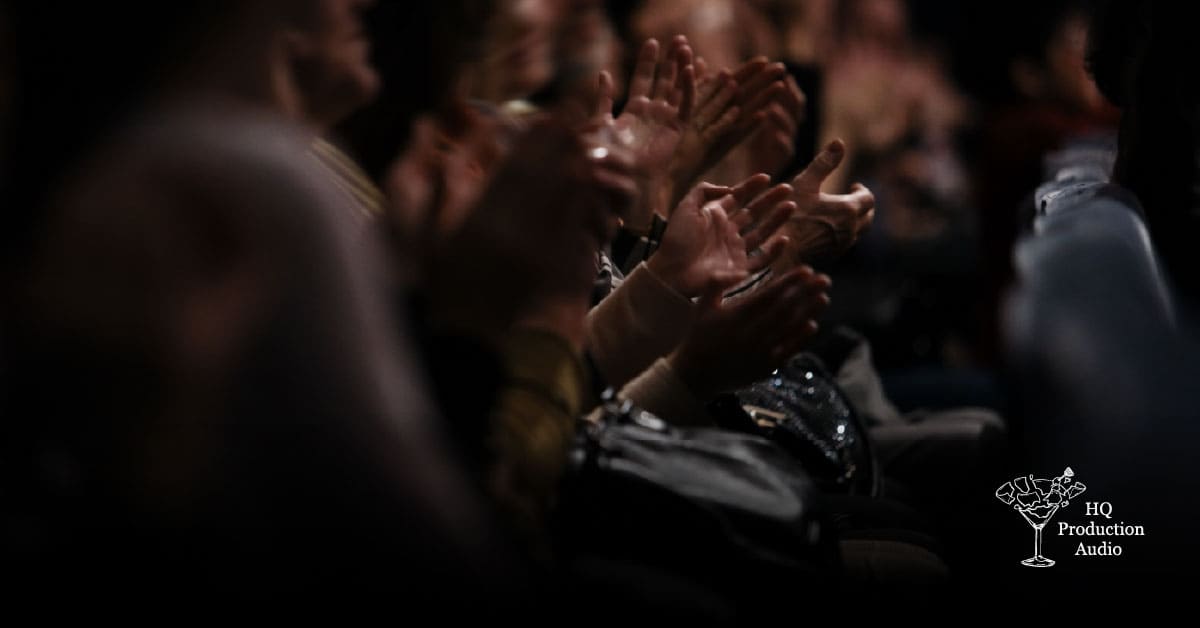
Key Components of Event Staging: Stage Design, Layout, and Technical Setup
Event staging is a blend of creativity and logistics, and its success relies on more than just putting a platform in place. From the stage’s physical design to the technical infrastructure behind the scenes, each component plays a role in shaping how your audience experiences the event. A thoughtful approach to layout, set design, and technical setup ensures the stage doesn’t just hold presenters—it becomes a dynamic focal point that supports your message and keeps attention where it belongs.
1. Stage Design & Layout
- Audience Sightlines & Flow
Ensure every attendee has a clear view of the stage. Seating layout—whether theater, classroom, or cabaret style—should cater to both visibility and attendee comfort. - Scale & Proportion
The size of the stage should suit the venue’s scale and the type of presentations you’ll host. A platform that’s too large can feel empty; too small, and it can feel cramped. - Stage Zones
Consider multiple stage zones: an “on-stage” area for speaking, a secondary platform for panelists, or a breakout space for live demos. - Set Elements & Branding
Incorporate key visuals like branded podiums, backdrop banners, digital screens, and props that reinforce the theme or corporate identity.
2. Technical Setup
- AV Placement
Microphones, speakers, and screens must be placed strategically—avoiding feedback, ensuring even sound coverage, and keeping sightlines clear. - Cabling & Safety
Route cables neatly using gaffer tape or cable ramps, clearly marking hazardous areas. Safety should never be compromised. - Rigging & Truss
For overhead lighting or hanging set pieces, safe and versatile truss or grid systems are vital. Rigging should adhere to venue rules and weight limitations. - Access for Technicians
Easy access to the tech booth and backstage areas ensures quick adjustments, troubleshooting, and smooth show flow.
When the stage design, layout, and technical setup work together seamlessly, you set the foundation for an engaging experience. The next step is to enhance that foundation with lighting and AV, bringing the stage to life.
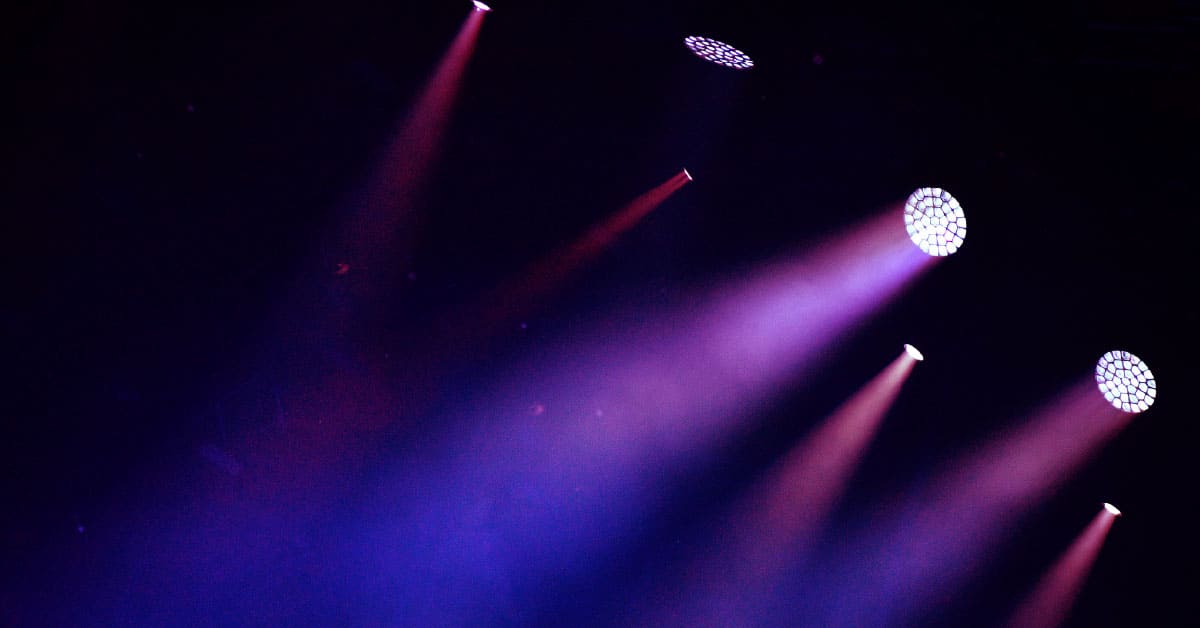
Lighting and AV’s Role in Staging: How Lighting and Sound Enhance the Stage
While staging provides the foundation, it’s the lighting and AV that bring the stage to life. The right combination of sound, visuals, and lighting transforms a static setup into an immersive experience, guiding audience emotions and keeping the event flowing seamlessly. Whether it’s spotlighting a keynote speaker, adding drama to a product reveal, or creating atmosphere with color and music, AV technology is the difference between a functional stage and one that captivates.
Lighting: More Than Illumination
- Mood & Atmosphere
Lighting controls tone. Warm, dim washes create intimacy; bright, crisp lighting energizes a crowd. Dynamic lighting cues can signal transitions, accentuate moments, and reinforce emotional impact. - Layered Lighting Strategy
- Key Light: Illuminates speakers clearly.
- Fill Light: Eliminates harsh shadows.
- Back Light/Hair Light: Separates presenters from the backdrop for depth.
- Accent & Wash Lights: Highlight key areas or deliver dramatic effects.
- Color Psychology & Branding
Utilizing brand colors or themed palettes through lighting reinforces connections and elevates branded experiences. - Dynamic Effects
Moving heads, gobos, color changes, and strobe effects can energize presentations, frame product reveals, or punctuate transitions.
Audio: Clarity, Balance, and Engagement
- Speech Reinforcement
Crisp, distortion-free sound is non-negotiable. Use directional microphones and ensure clean gain staging to reduce feedback. - Ambient & Musical Elements
Background music, transitions, and ambient effects help shape rhythm and engagement. A well-placed sound effect or music cue can dramatically highlight a big moment. - Speaker & Subwoofer Placement
Distribute sound evenly. Subwoofers can add weight for music-heavy or energetic segments, while precise speaker placement stops echo and “dead zones.” - Audio Redundancy
For critical events, a backup mic or redundant audio path can save you from embarrassing disruptions mid-show.
Sound and lighting shape how audiences feel, respond, and remember your event. Once these elements are in place, the final layer is tailoring staging details to align with your theme and brand identity.
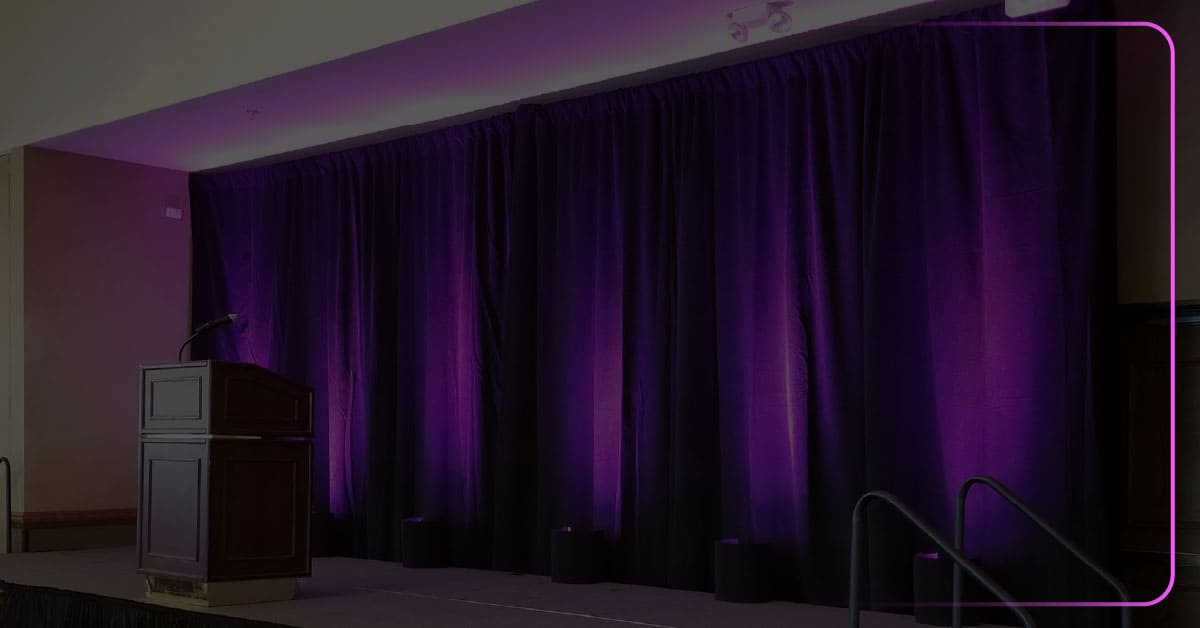
Tailoring Staging to Your Event’s Theme: Customizing Staging to Fit Your Event’s Branding or Style
Every event tells a story, and staging should act as the stage set for that narrative—seamlessly tying together visuals, branding, and audience experience. The way the stage looks, feels, and functions can reinforce your theme just as strongly as the speeches or presentations taking place on it.
By customizing staging elements such as color palettes, props, backdrops, and lighting, you create an environment that not only supports the program but also amplifies the mood you want to convey. When done well, staging becomes a physical expression of your brand and event theme, leaving guests with an impression that lasts long after the final spotlight fades. Here’s how to align staging with theme and branding:
1. Visual Consistency
- Palette Matching
Use stage décor, drapery, and lighting colors that match your brand’s colors or the event’s thematic palette—creating a unified look. - Branded Backdrops & Gobos
A custom gobo—such as your logo or signature pattern—cast on stage surfaces elevates visual interest and reinforces identity.
2. Creativity & Immersion
- Themed Props & Set Pieces
For themed galas or launches, consider sculptural elements, themed furniture, or immersive environmental pieces. - Projection Mapping
Use videowalls or projection mapping to dynamically transform plain surfaces into thematic environments or branded visuals. (Here are some stunning projection mapping examples.)
3. Tone & Experience
- Corporate vs Playful
A tech conference might benefit from sleek LED walls and crisp lighting; a charity gala could lean toward warm spotlighting with elegant drapes. - Guest Expectations
Student graduations aim for celebratory lighting and open staging; a board meeting requires focus, with clean aesthetics and minimal distraction.
By weaving your story, brand, and message into every design choice, you transform a simple stage into an immersive environment. To make that vision a reality, it’s essential to collaborate closely with your AV team.
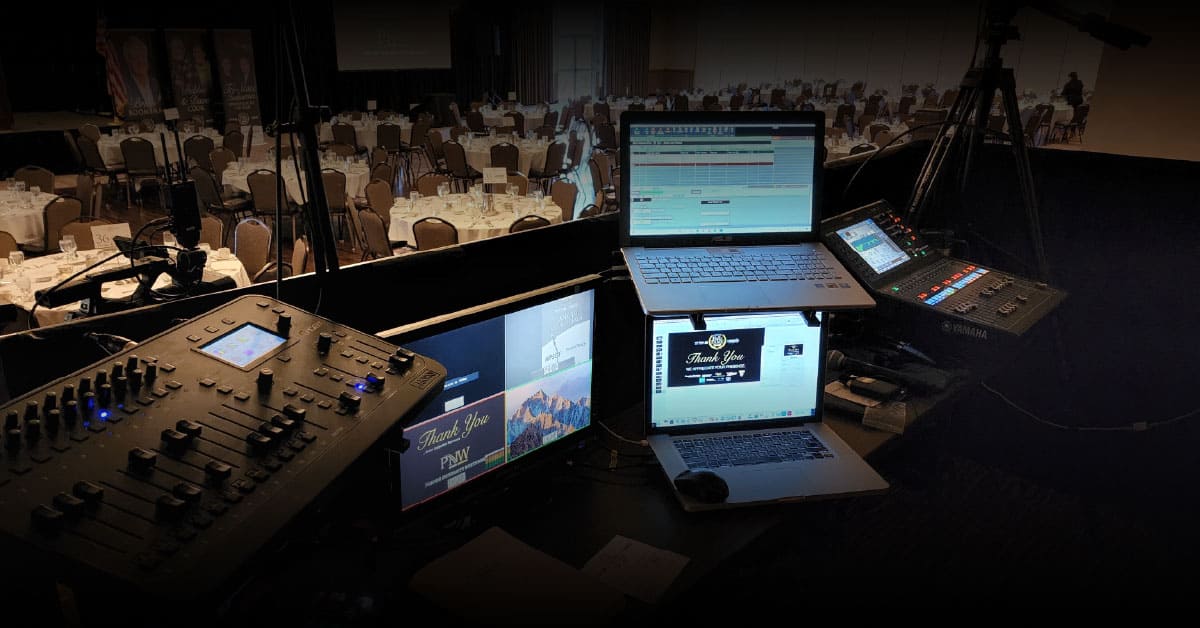
Tips for Collaborating with Your AV Team to Create Impactful Staging
Even the most creative stage design and advanced AV setup won’t succeed without strong collaboration between planners and production professionals. Your AV team brings technical expertise and innovative insight that can elevate your ideas into a seamless, show-ready reality.
By engaging them early, sharing your vision, and maintaining open communication throughout the process, you ensure that every detail—from lighting cues to microphone placement—aligns with your goals. Effective collaboration not only reduces last-minute stress but also allows your event to reach its full potential, turning staging from a logistical necessity into a powerful storytelling tool. Here’s how to ensure a smooth, creative partnership:
1. Early Engagement & Vision Sharing
- Share your event’s purpose, tone, and brand guide early in the planning stage. Invite the AV team to early creative discussions—not just technical ones.
2. Provide Inspiration & References
- Share reference images, past event photos, or Pinterest boards. Visual direction helps AV teams deliver precisely what you’re envisioning.
3. On-Site Walkthroughs & Mockups
- Schedule venue walkthroughs with your AV team to map sightlines, rigging points, and seating flow. Physical models or digital renderings help align expectations.
4. Clear Communication & Change Management
- Use clear change-control protocols. Last-minute design shifts happen—but communicating them promptly to AV avoids costly delays or confusion.
5. Rehearsals & Cue Practice
- Walk through lighting and audio cues in technical rehearsals. Running lighting transitions and testing mic levels—preferably with the actual presenters—ensures smooth execution.
6. Plan for Contingencies
- Ask your AV team about backup microphones, spare bulbs or lamps, and failover audio paths. A little redundancy prevents big hiccups.
7. Debrief & Continuous Improvement
- After the event, review what worked—lighting cues, staging layout, AV performance—with your team. These insights build better outcomes for future events.
Impactful staging is the result of a true partnership. When you view your AV team not just as technicians but as creative collaborators, you open the door to innovative ideas, smoother execution, and a stage that supports your event’s goals at every level. By fostering trust, communicating openly, and allowing room for their expertise, you’ll create staging that doesn’t just meet expectations—it exceeds them, leaving your audience with an experience they’ll remember long after the lights go down.
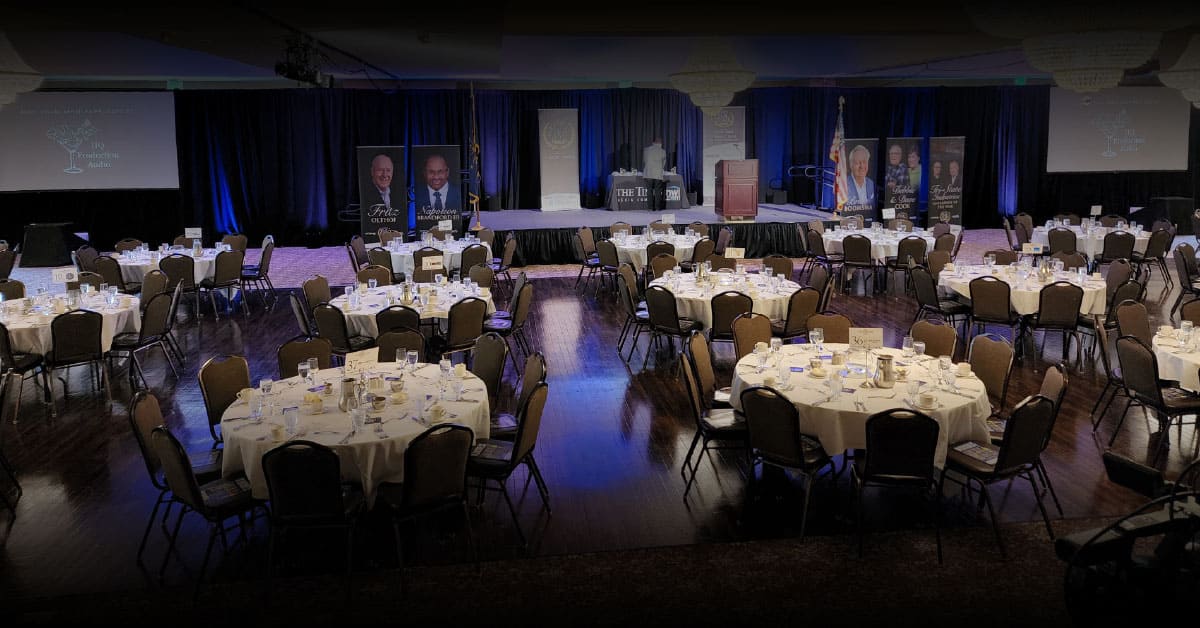
Wrapping Up
Event staging is the invisible engine powering audience engagement—from sightlines and lighting to the crispness of each spoken word. When thoughtfully designed and harmonized with your event’s theme and branding, staging transforms your event environment into a compelling, immersive experience. Remember: staging is more than just technical setup—it’s storytelling through space, sound, and light.
To make it all come together, be sure to choose the right AV production company (read our article on how to do that HERE). By sharing your vision early, embracing creative collaboration with AV professionals, and honing your staging strategy, you’ll elevate your event from functional to unforgettable. Have questions about event staging? Contact the team at HQ Production Audio today!
